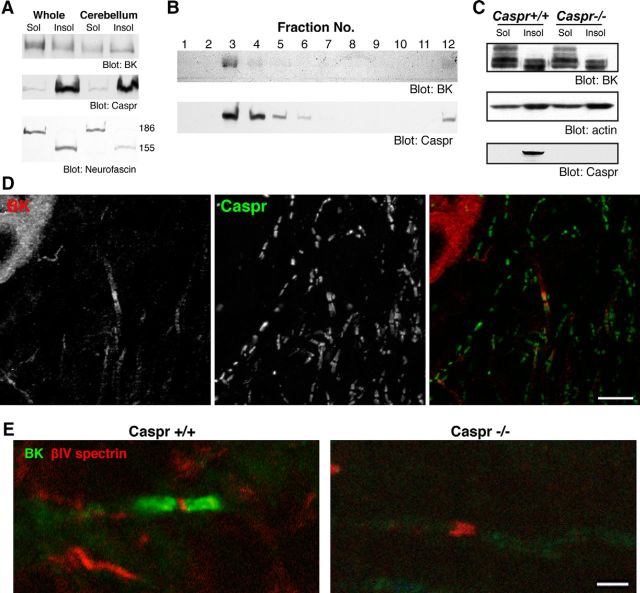Figure 3.
Paranodal localization of BK channels depends on an intact paranodal junction. A, Biochemical characteristics of BK channels in the cerebellum. Membrane fractions were prepared from rat whole brain (Whole) or cerebellum. Membrane preparations were incubated with 1% Triton X-100 for 30 min and separated into soluble (Sol) and insoluble (Insol) fractions by centrifugation. The samples were subjected to immunoblotting and probed for BK channels, the paranodal membrane protein Caspr, and another paranodal protein, Neurofascin. Note that only the paranodal 155 kDa isoform of Neurofascin was detected in the insoluble fraction. B, Cofractionation of BK channels and Caspr. Detergent-insoluble fractions from the cerebellum were fractionated using sucrose-density gradient centrifugation. Both BK channels and Caspr were detected in the low-density paranodal protein–lipid complex fraction. C, Detergent insolubility of BK channels in the cerebella of wild-type (Caspr+/+) and Caspr-deficient (Caspr−/−) mice. Actin was used as a loading control. D, Paranodal BK channels in the mouse cerebellum. Mouse cerebellar sections were immunolabeled for BK channels (red) and Caspr (green). Scale bar, 10 μm. E, BK channels are not detected at paranodes in Caspr-deficient mice with disrupted paranodes. Cerebellar sections from wild-type (Caspr+/+) and Caspr-deficient (Caspr−/−) mice were immunolabeled for BK channels (green) and βIV-spectrin (red). Scale bar, 2 μm.

